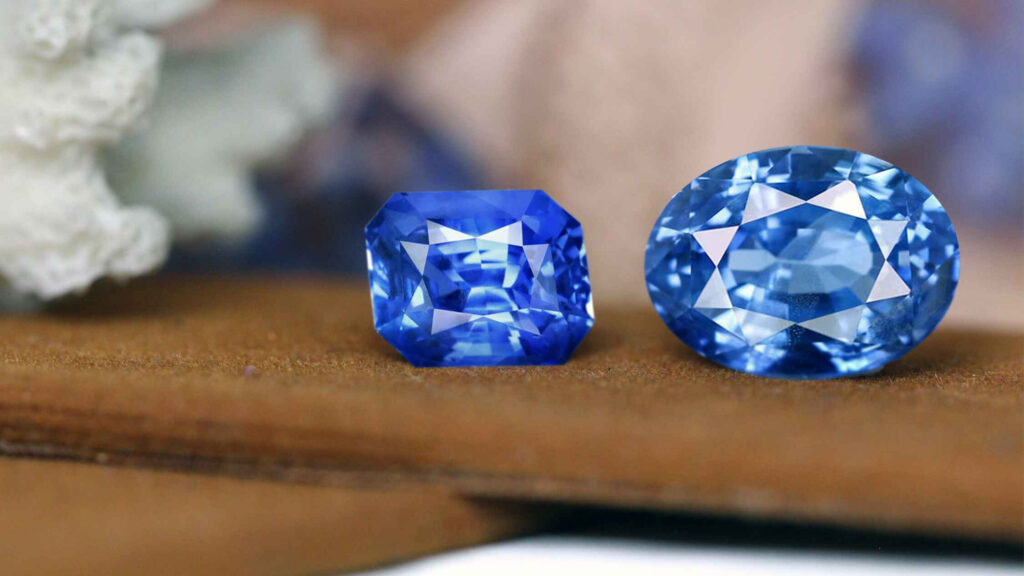The blue sapphire, or Neelam stone, is one of the most deeply valued gemstones to ever exist, both in power and beauty. Its worshipped power coupled with the breathtaking deep blue color allows the blue sapphire to awe gem lovers and spiritual seekers, even the most revered kings, for centuries. Its energy and beauty are mystical, and the blue sapphire carries with it a rich history and amazing facts that one should know before making a purchase.
The History of blue sapphire is rich and interesting.
The word sapphire is derived from the Latin ‘sapphirus’ and Greek ‘sappheiros’ , which both mean “blue.” These civilizations also attributed the blue sapphire with positive meanings such as royalty, wisdom, and divine favor. Ancient Greek, Roman, and even Persian civilizations held great value for the blue sapphire due to its healing and protective capabilities.
In the medieval ages, clergy in Europe adorned blue sapphires as a symbol of Heaven. The blue sapphire also protected kings suffering from envy and harm, while in India, the Neelam stone was associated with Saturn in Vedic astrology, aiding in providing discipline and focus to the wearer.
Astrological Significance of Neelam Stone
In Vedic astrology, the Neelam stone is believed to represent sapphires, which are associated with the planet Saturn, noted for its considerations of karma, discipline, and hard work. If Saturn plays a benefic role in one’s horoscope, wearing a Blue sapphire ring may grant a person rapid success, spiritual evolution, and safeguard one against malevolent forces. On the other hand, it is a gemstone that is beneficial only after an appropriate horoscope consultation because its potent effects may not resonate positively for everyone.
Individuals going through the phases of Sade Sati or Shani Mahadasha are usually recommended to utilize the Neelam stone to curb the adverse effects of Saturn and enable constructive change.

Image Resource: Navratan Gemstone
Interesting facts about Blue sapphire
Second Hardest Natural Stone: Blue sapphires are the 2nd hardest gemstone, and they come right after diamonds. On the Mohs scale of hardness, they are a 9, which means you can wear them daily.
Color Variety: Like other sapphires, they can also be deep royal blue, but blue sapphire stones can be light sky blue or even midnight blue.
Origin Countries: Blue sapphires are found in the United States and also in Kashmir (India), Sri Lanka, and Myanmar, but Kashmir is known for some of the best sapphires. Each origin has distinct features of color and clarity.
The Royal Connection: Worn by Princess Diana and now in the possession of Kate Middleton, the most famous blue sapphire ring in the world possesses a breathtaking 12-carat Ceylon sapphire.
Synthetic Sapphires: Like natural sapphires, synthetic sapphires look the same, but unlike natural sapphires, they are created in a lab and therefore devoid of value. Always make sure that the blue sapphire you are purchasing is authentic.
Conclusion
Worn for its timeless aesthetic appeal or powerful astrological effects, the blue sapphire stone continues to be held in great esteem and mystique in the world of gemstones. Its royal jewels to Vedic remedies speak of a rich and enduring legacy. Should you wish to purchase one, you must ensure to make the purchase from a reputable seller and consult a specialist to guide you in harnessing its full value. A thoughtfully bought blue sapphire ring can alter one’s life for the better, both spiritually and aesthetically, and perhaps more significantly, an investment.
Recommend0 recommendationsPublished in Uncategorized



